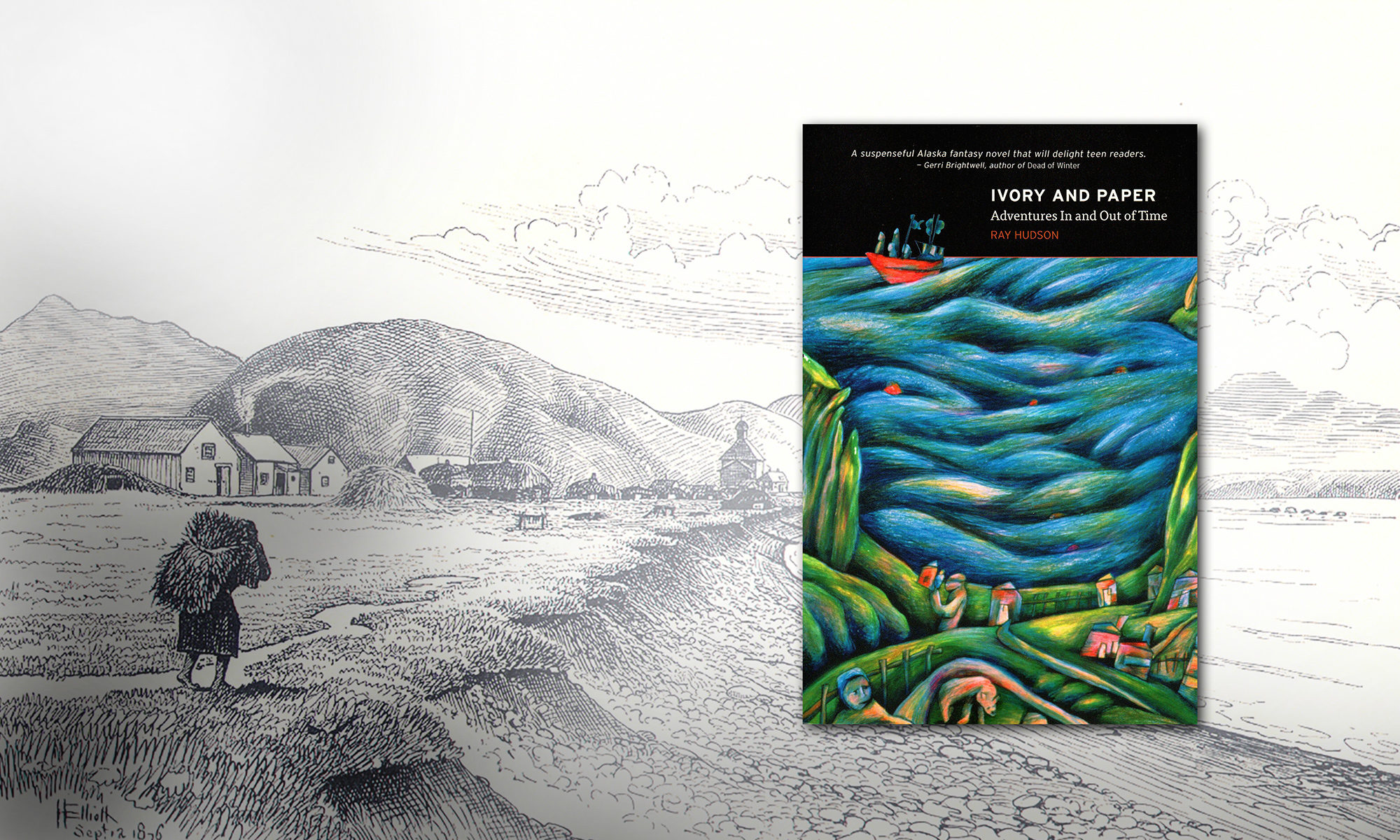Guide to Various Subjects Mentioned in Ivory and Paper
PART ONE: THE BOOKMARK AND THE IVORY FOX
Page 10: We Unangax̂ are known as people of the pass or seaside.
Knut Bergsland and Moses Dirks in Aleut Tales and Narratives, (1990:2) wrote that the name Unangax̂ stems from a word referring to the seaside. Moses Dirks has perceptively stated that the word may also derive from the passes between islands.
Page 11: Unangax̂ were given Russian names when they were baptized. There aren’t any original Unangax̂ names around anymore, except for maybe nicknames.
Knut Bergsland included a section on “Ancient Aleut Personal Names” in the Aleut Dictionary (Appendix 7). The most complete list of original names is found in Ancient Aleut Personal Names: Kadaangim Asangin/Asangis, edited and interpreted by Knut Bergsland.
For naming practices before the Russians arrived, also see Veniaminov, Notes on the Islands of Unalashka District, 1984:190-191.)
Page 11: Gram lives in “New Town”….
New Town was a group of about twelve small homes built from cabanas that were hauled down from the hills after World War II for use by people moving into Unalaska from villages (Makushin, Kashega, and Biorka) that were not resettled after the WW2 evacuation. The New Town in Ivory and Paper is based on this neighborhood as it existed in the 1960s and 1970s.
Page 13: I love running errands for Gram, but I hate the store….
The Merc is roughly based on three stores at Unalaska. The name comes from Verne Robinson’s Aleutian Mercantile, known as “the Merc.” The physical layout is based on Carl Moses’s Carl’s Commercial Company after the additions of a new grocery wing and the liquor store. The dim light over the shelves comes from the store owned by E. E. “Pop” Hortman, before Robinson bought it and transferred his Aleutian Mercantile there in the early 1960s.
Page 18: I remembered Dad’s copy of Aleut Art….
Lydia T. Black’s Aleut Art: Unangam Aguqaadangin/Unangan of the Aleutian Archipelago has been published in two editions.
Page 18: alaadikax̂ or fried bread
For this and other local recipes, see Qaqamiiĝux̂: Traditional Foods and Recipes from the Aleutian and Pribilof Islands.
Page 41: …next to fragments of stiff cordage
There is no thorough study of Aleutian cordage although the range of techniques and the quality of finished works are both impressive. Cord was made from two, three, and four strands. The strongest cords were made from eight strands. Cords were both round and square.
Hrdlicka, The Aleutian and Commander Islands and Their Inhabitants, 1945:605-607.
Page 41: Captain Hennig digs stuff up and sells it Outside.
This “Alaskan slang” refers to any place in the United States outside of Alaska.
Page 42: I’m not Eskimo, cannery-boy, Inuit or Iñupiaq.
An excellent website describing various Alaska Native groups is that of the Alaska Native Language Center at the University of Alaska Fairbanks: https://www.uaf.edu/anlc
Page 44: …in time for us to collide with one of the laws of physics.
See the Pauli exclusion principle. (It’s very complicated!)
Page 45: “A fox,” she said.
Although this carved ivory fox is imaginary, there are three ivory carvings of fox pictured in Varjola, The Etholen Collection, 1990:203. These were collected after contact with the west.
Page 46: Where most of my ancestors went.
From the time the first Russians arrived in the Aleutians (between 1741 and 1758) until 1830 the population dropped by about seventy-five percent. In her estimate of “the total Aleut population at the time of the Russians’ arrival” Liapunova postulates that there were “7,500 to 9,500 people, or, in round numbers, 8,000 to 10,000 people, but no more.” [Roza G. Liapunova, “The Aleuts before Contact with the Russians: Some Demographic and Cultural Aspects”, 8-10.] The 1791 population is estimated at about 3,000. Thus the population loss from the time of initial arrival of the Russians until 1791 was between 60 and 68 percent. The population loss between 1791 (3,000) and 1830 (2,300) was 23 percent. However, the total population loss up to 1830 was a reduction from between 7,500 and 9,500 to 2,300, or between 69 and 76 percent. At worst, about three-fourths of the population base had been lost.
Page 47: The title’s as long as the book!
William Healy Dall, On the Remains of Later Pre-Historic Man, Obtained from the Caves in the Catherina Archipelago, Alaska Territory, and Especially from the Caves of the Aleutian Islands. Smithsonian Institution, Washington, D.C., 1878. This book is available on line at several sites. (https://www.biodiversitylibrary.org/item/58733#page/7/mode/1up) Anna is reading from pages 9-10.
